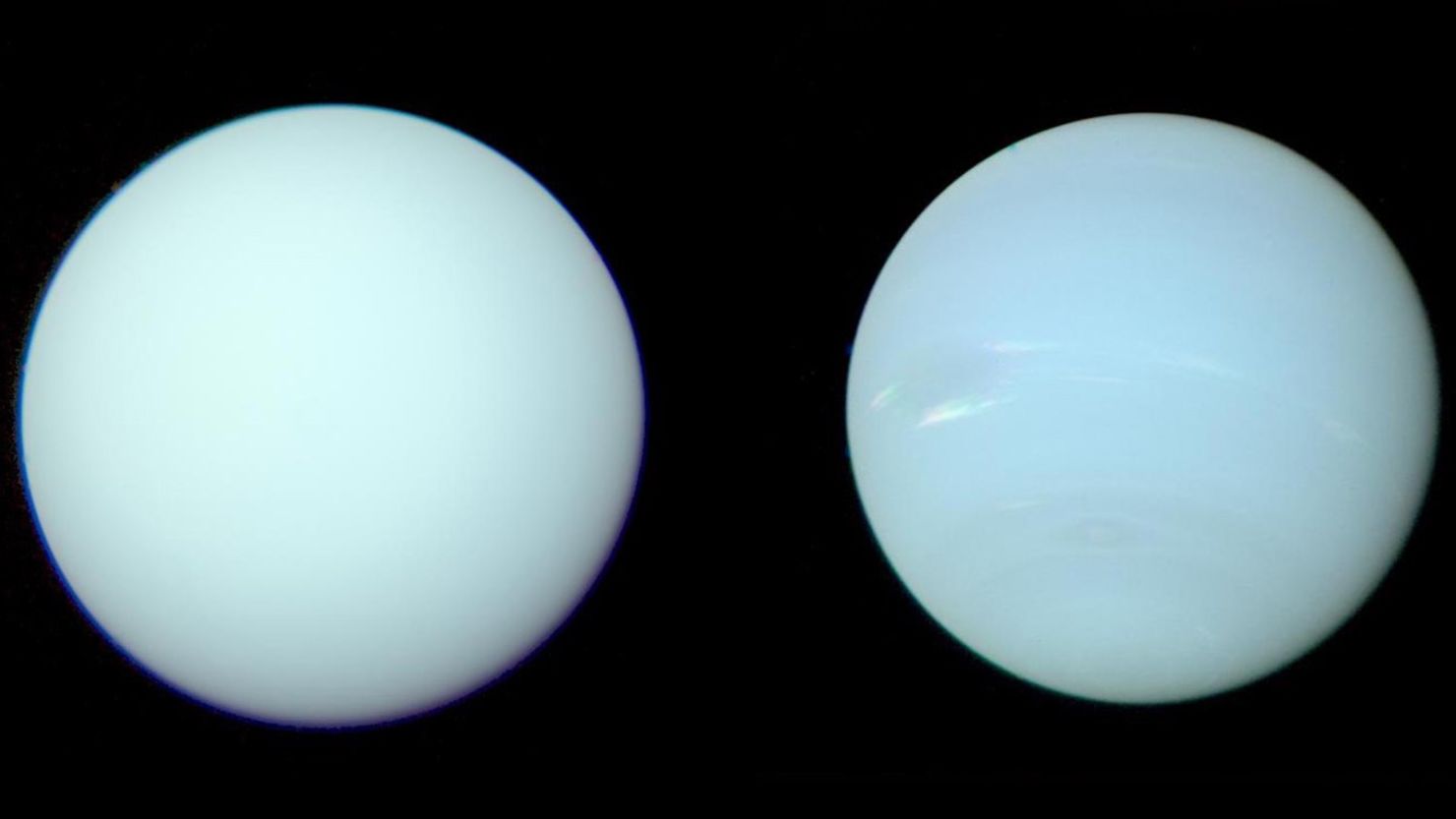Study reveals the Real colours of Uranus and Neptune
A recent study at Oxford University has revealed that the colours of Uranus and Neptune might be more similar than we thought and very different than what we had been led to believe.

Neptune and Uranus are two of the most distant and mysterious worlds in our solar system. They are so far away from the sun that they appear dim and faint to the human eye, but thanks to the advanced technology of NASA, we can now see them in their true colours.
Neptune and Uranus are the seventh and eighth planets from the sun, orbiting at an average distance of about 2.9 billion and 4.5 billion kilometers (1.8 billion and 2.8 billion miles), respectively. They are the third and fourth-largest planets by diameter and the fourth and third-most-massive planets in the solar system.
They have thick atmospheres composed mainly of hydrogen, helium, and methane. Methane is the key ingredient that gives them their distinctive colours, as it absorbs red light but allows blue-green light to be scattered back into space.
Also Read: Aditya-L1-Objective|global Collaboration
Colours of Uranus and Neptune: They are actually more similar than we think
However, the colours of Neptune and Uranus are not as different as they seem. NASA’s Voyager 2 mission, which had carried out flybys of both planets in the late 1980s, was the first to capture detailed images of them.
However, the images were processed and enhanced to highlight their features, creating a misconception about their true colours. In the Voyager 2 images, Neptune had a striking deep blue colour and Uranus had a pale cyan colour.

A recent study by researchers at the University of Oxford has corrected this error by applying a more accurate model to the original data collected by Voyager 2.
The model takes into account the scattering and absorption of light by the atmospheres of the planets, as well as the colour sensitivity of the cameras on the spacecraft. The result is a more realistic representation of the colours of Neptune and Uranus, which are very similar and closer to a light greenish-blue.
Also Read: Aditya-L1-Objective|global Collaboration
Colours of Uranus and Neptune: Uranus’ shifting colorscour
While solving one planetary mystery, the research team seized the opportunity to answer another: why Uranus seems to change colors as it orbits the sun, as seen in the video loop below.
A year on Uranus lasts 84 Earth years. While the planet seems greener during its summer and winter solstices, it has a bluer hue during the equinoxes.
The unusual world spins on its side, so one of the planet’s poles points toward Earth and the sun during solstices.
During their comparison of images of Uranus for the study, the researchers looked at measurements of the planet’s brightness recorded by the Lowell Observatory in Arizona from 1950 to 2016.
Also Read: Aditya-L1-Objective|global Collaboration
